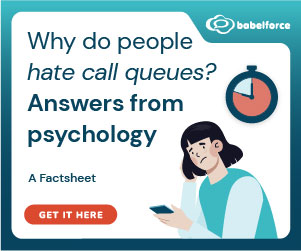What gets measured, gets improved, and in the world of contact centres, measurement is everything.
With customer expectations at an all-time high, delivering exceptional service isn’t just about good intentions, it’s about having the right insights to back every decision. That’s where KPIs come in.
From forecasting accuracy to customer sentiment, today’s leading contact centres are turning to powerful performance metrics to stay ahead of the curve. These KPIs aren’t just numbers, they’re signals, stories, and strategies waiting to be unlocked.
To help you navigate the data-driven landscape, we asked top industry experts to share their most valuable contact centre KPIs, and why they matter now more than ever.
Important Contact Centre KPIs
1. Customer Satisfaction (CSAT)
Customer Satisfaction remains one of the most direct ways to understand how customers feel about their experience, and how well your contact centre is meeting their expectations.
Typically measured through post-interaction surveys using a scale (e.g. 1–5 or 1–10), CSAT provides quick, actionable feedback. But when combined with follow-up questions or open-ended responses, it also offers valuable context behind the score.
Modern contact centres go beyond just tracking CSAT scores, they use them to identify areas for coaching, test service delivery improvements, validate QA standards, and even as a proxy for Customer Lifetime Value (CLV). In many cases, it also helps inform service level targets and experience benchmarks.
For a guide on how to calculate Customer satisfaction, read our article: What Is CSAT? – With a Meaning, Calculations and Great Tips

2. Forecast Accuracy
Contact centres cannot afford to continually staff their facilities or remote workforces according to the theoretical peak. It’s simply not sustainable.
On the other hand, failing to meet staffing requirements leads to long wait times, overworked advisors, and poor customer experiences.
Forecasting demand is essential for planning capacity, but only if you’re getting it right. Measuring Forecast Accuracy shows businesses if these efforts are predicting what will actually happen or completely missing the mark.
Contributed by: Kumaran Shanmuhan at Jacada
3. Total Number of Interactions
Total Number of Interactions, also known as contact volume, is a primary measure of contact centre activity. It measures how many interactions were handled by the contact centre during a certain period.
This KPI should be tracked across all channels – like voice or email – and then rolled up into a total. Being an activity measure, Total Number of Interactions can be benchmarked against forecasts and used to improve Forecast Accuracy.
In addition, the KPI is needed to calculate other measures. For example, Cost of Operations can be divided by Total Number of Interactions to determine Cost Per Interaction, as in the equation below.
The formula for calculation the cost per interaction is:
Cost Per Interaction = Cost of Operations ÷ Total Number of Interactions
4. Quality Scores
Quality Scores reflect an advisor’s performance in meeting both customer and business needs during a customer contact.
This KPI usually involves manual scoring of a customer–advisor interaction, using a scorecard that summarizes your organization’s vision of what great customer service looks like.
Your call centre KPI scorecard will likely have been weighted based on what drives CSAT most, with a few other compliance criteria – but there are a whole host of things that can make up your scorecard and Quality Scores KPI.
For example, scorecard criteria can range from subject-matter expertise to proficiency in workflows, tools and systems
5. Utilization Rates
Utilization is the percentage of time that an advisor is available and expected to deliver service. This is typically measured by dividing an advisor’s logged-in time by their total shift time.
This KPI is important because contact centre labour is a significant cost. Utilization helps to balance labour costs against contact centre demand.
If utilization rates are high during periods of low contact volumes, then labour costs will be unnecessarily high. Conversely, if Utilization is too low during periods of high contact centre demand, then service levels and resulting CSAT may decline.
Also, Utilization can be used to determine whether your workforce is spending too much, or too little, time logged in and in a state of readiness.
6. Cost of Operations
Cost of Operations measures all the activity costs directly associated with a contact centre.
These costs typically include variable costs like salaries, communications charges, software usage fees and any other cost that vary according to use.
Operating costs also include fixed costs like hardware costs, allocated overhead, contract costs and other costs that do not vary with use.
Cost of Operations is an important KPI because it is benchmarked against budget to determine whether costs are being controlled.
7. Advisor Attrition

Advisor Attrition measures the turnover rate in your advisor workforce.
Labour is one of the largest components in contact centre cost of operations, with labour costs being a function of salaries and benefits along with recruiting and training. High advisor turnover results in higher recruiting and training costs.
Also, high Advisor Attrition can have a systemic impact on other aspects of contact centre operations.
For example, if the ratio of skilled to new (and less trained) advisors is low, then service levels, related operating costs, and even CSAT will all be negatively impacted.
In addition to this, high Advisor Attrition is often an indicator of more fundamental problems within the work environment which degrade morale and motivation.
Contributed by: Mark Ungerman at NICE inContact
8. Customer Complaint Volumes

One thing that organizations often forget to take into account when setting their customer service goals is improving products and services. The contact centre can play a big part here.
If you tag messages within your customer engagement tooling with specific categories, such as “complaint about website” or “complaint about product X”, you can see whether the volume of a specific complaint is very high and take action where necessary.
Tracking this KPI is a great way to drive the voice of the customer into the wider organization and showcase the value of the contact centre.
Contributed by: Linsey Jepma at OBI4wan
9. Average Handle Time (AHT)
This KPI is a well-known one and, although it’s well known, it can sometimes be misunderstood.
Average Handling Time is the average length of a customer interaction from start to finish. This includes call initiation, talk time, and wrap-time.
AHT is still an important metric in contact centres. Lower AHT might imply more calls being made per advisor and possibly more revenue. This KPI can therefore be useful in understanding team efficiency, advisor training gaps and service level.
Trying to reduce your AHT means more calls per advisor. However, this could result in your advisors rushing customer calls, which can have a drastic effect on the customer experience.
If your advisors are rushing a phone call, customers can end up confused or dissatisfied. They might end up calling your contact centre again, which will impact other KPIs such as First Contact Resolution.
To reduce AHT safely, consider changing the following variables:
- Provide up-to-date, user-friendly support portal for customers
- Provide an intuitive, unified platform for advisors
- Enable ongoing advisor coaching
- Optimize routing and IVRs
- Record and analyse interactions
To learn how to calculate average handling time in your contact centre, read our article: How to Calculate Average Handling Time (AHT)
10. Next Best Action

Next Best Action (NBA) refers to the action that is suggested by the advisors to the customer after their issue has been resolved.
For example, a customer may call a contact centre to book home insurance. After helping with this, the next best action might also be offering travel insurance for any trips they plan to take later in the year.
NBA as a KPI shows a strong focus on customer needs to promote customer loyalty as well as opportunities for sales (cross-selling and upselling).
Some contact centres may see NBA as a process that can help with improving and measuring other KPIs.
For example, after rolling out an NBA strategy, contact centres can measure how many of the next best actions were carried out, how many had positive or negative outcomes and which advisors were most associated with the successful outcomes.
On this basis, for example, NBA success or implementations might be another call centre metric you might want to track.
Contributed by: Brent Bischoff at Business Systems

11. Customer Sentiment
Customer Sentiment is becoming an important KPI for many organizations because it shows how contact centre performance relates to customers’ feelings.
While contact centres can use simple feedback surveys to measure this KPI, tracking this in a more sophisticated way can build a better overall picture of their customers’ attitudes.
Sentiment analysis tools use artificial intelligence and machine learning to analyse large volumes of customer data. This data can reveal not only how a customer feels when they are engaged on certain topics, but also what the customer may purchase or query next thanks to predictive analytics.
Contact centres can use these predictive analytics to create more tailored interactions that are specific to each customer.
Contributed by: Sunny Dhami at RingCentral
12. Visitor Intent

Why are customers contacting you? Having a “Visitor Intent” KPI will help you to answer this question and figure out your key demand drivers.
For example, if this KPI tells you that a large number of chats are about late deliveries, could you swap live advisors with chatbots to answer queries of this nature swiftly and accurately? This KPI will help you see if there is value in doing so.
To track this KPI you simply need to ask advisors to enter contact reason codes in the CRM, during their After Call Work (ACW), after every call.
Contributed by: Magnus Geverts at Calabrio
13. Call Volume Trends
How many advisors should you schedule in order to meet demand? To find out, you need to keep track of call volume trends.
This important KPI indicates your busiest times of the day, week, and months over several years, enabling you to modify staffing to handle anticipated spikes in calls.
Ideally, an increase in calls translates to more customers and sales, but sometimes a surprise spike in calls reveals that customers have a problem with a product or service.
In such cases, the call traffic KPI alerts you to the problem and is key in failure demand analysis, helping you to identify new or recurring problems.
14. First Contact Resolution (FCR)
First Contact Resolution measures the percentage of contacts that completely address the customer’s needs without having to transfer, escalate or return their messages.
Research by Service Quality Measurement has shown that for every one percent improvement in FCR, there is an equal one percent increase in customer satisfaction.
To optimize this KPI, one option for your contact centre is to route every call to an advisor with the skills that best meet each customer’s needs.
Additionally, these advisors will ideally have the customer’s data and interaction history at the ready, so they can get it right the first time.
Want to know how to calculate first contact resolution, read our article: How to Calculate First Contact Resolution (FCR) – With Formula
15. Hold Time

According to Arise, nearly two-thirds of people say they are willing to be placed on hold for only two minutes before hanging up. In a separate survey, 66% stated that being on hold for just one minute is too long.
However, it’s the nature of the beast that advisors sometimes must place customers on hold to look up information or ask other advisors for assistance.
Your Average Hold Time KPI, usually expressed in seconds, is a window into how efficiently your advisors find answers and achieve First Contact Resolution.
Eventually, you can determine average hold times so advisors know when to check back with customers or how long before a call is at risk of being abandoned.
Contributed by: Yasir Bugrara at Voci Technologies
16. Employee Engagement

Keeping a pulse on engagement at every part of the employee journey not only ensures advisors stay motivated, supported and trained, it also helps to ensure that advisors are working hard to meet customer needs.
To track Employee Engagement, we want to map out the employee journey and look at which other KPIs best represent Employee Engagement at each part of that journey.
Take training, for example, we can look at how at Attrition Rates change from week to week during our induction periods. That will be our Employee Engagement KPI for this phase of the employee life cycle.
An alternative would be to employ solutions that track and measure coaching and understand employee performance to help supervisors with visibility as they suggest improvements and coaching plans to increase their sense of accomplishment.
Contributed by: Aviad Abiri at NICE
17. Customer Effort Score (CES)

Customers want service to be accessible, easy and effective. The Customer Effort Score (CES) can tell you how easy or difficult customers find answers when they seek help.
It is typically calculated through a survey whereby customers are asked the extent to which they agree with a statement, to rate a company’s level of effort or to answer a question on their experience.
If a customer has a seamless experience when dealing with a brand, the likelihood of them remaining loyal to that company increases.
A low CES indicates that your advisors and the contact centre technology you have implemented are delivering a good customer experience, and investment in self-service, chat and messaging can help you to achieve this. A high CES is an indicator that something is wrong.
Chatting with companies should be low effort, just like chatting with family or friends. The CES is the key KPI for many organizations that go along with this statement.
Contributed by: Simon Johnson at Freshworks
18. Call Abandon Rate

Wait time is the primary issue forcing customers off the phones onto less personal communication channels such as chatbots and email. Call Abandonment Rate should, therefore, be a priority KPI for contact centres to measure.
To utilize Call Abandonment Rate effectively, businesses must have a strict threshold figure for the number of abandoned calls they are willing to accept. This threshold must then be rigorously monitored to ensure that the volume of abandonments does not rise above it.
If and when it does, a structured response should be in place to deal with the high volume of abandoned calls. Having an intelligent phone system can help to gain full visibility over the queue and provide insight into an appropriate level of response.
Using the Call Abandonment Rate KPI in this way brings about actionable insight to further streamline customer service centres.
Contributed by: Neil Hammerton at Natterbox
For the best way to calculate call abandonment rate, read our article: How to Measure Call Abandon Rate
19. Customer Emotion

Emotion represents a key aspect of a customer’s experience with a brand. By identifying the emotion(s) expressed in each interaction and the strength of the emotional statement, brands can design emotionally appropriate engagement in their marketing campaigns and in advisor training.
Natural language processing (NLP) engines allow companies to evaluate unstructured text at scale, across the contact centre, enabling them to identify and measure prevalent customer emotions.
By combining these discrete measures into a composite score, organizations can obtain a complete picture of every customer interaction.
This composite score can serve as a key metric for quality measures, proactive service recovery programmes and overall customer experience measures and provide greater insight into the impact of a programme.
You can also measure Customer Emotion by calculating a KPI known as “Net Emotional Value“, which is a survey-based metric.
Contributed by: Shorit Ghosh at Clarabridge
20. Peak Hour Traffic
Proper planning prevents poor performance. Understanding and strategizing around your Peak Hour Traffic measurement can go a long way to set your advisors and business up for success.
The ability to service the maximum number of clients during peak times allows individual advisors to handle the spike in calls and stay out of the weeds, so that they can focus on the tasks at hand.
By staying focused on the tasks at hand, advisors are also much more likely to achieve FCR, another important contact centre KPI for many organizations.
21. Longest Call Hold
Identifying longest hold times and analysing their root cause can alleviate tremendous call centre pressure.
When root cause is not immediately identifiable, simple trend knowledge and business planning can facilitate simple fixes.
For example, slight schedule adjustments can result in a massive impact on wait times.
Using this approach is a great way to lower AHT over time. Much better than targeting advisors to rush through processes like after-call work (ACW).
This brings us to another key metric, Wrap Time – which is the time it takes to complete ACW. This should be measured and monitored to determine how much time should be allocated for this part of the call advisor’s job.
22. Cost Per Call (CPC)
A simple question. How much does each call cost? Calls made and calls answered.
Cost per call considers the costs – in terms of advisor time, technology costs and telephone costs – of making and taking that call.
Monitoring cost per call against industry standards and business operational targets can help put other metrics into perspective.
One example is Absenteeism. How much does absenteeism increase Wait Time and therefore Cost-Per-Call? You may be shocked when you do the calculations!
23. Time Lost Due to Technology Issues

We’ve all been there. Turn it off, turn it back on. Installing updates. Audio issues. The instant rise of remote work due to the pandemic have only exacerbated these issues.
Computers, phones, WIFI, internets and VPN will not always work the way we want them to.
Knowing how much tech downtime your team is experiencing is a vital metric and potentially one of the easiest fixes to facilitate.
A simple audit of tech downtime can lead to process improvements and overall customer and Advisor Satisfaction increase.
Tracking these KPIs can help your contact centre and team maximize objectives, improve the customer experience and improve overall performance.
Contributed by: Mark Knowles at Aspect
24. Net Promoter Score (NPS)

By asking just one question – “How likely are you to recommend this company to a friend or colleague?” – Net Promoter Score (NPS) provides an insight into customers’ satisfaction and loyalty.
Using a simple scale from one to ten, companies can identify satisfied customers or “promoters” with scores of nine or ten, highlighting a group of brand advocates.
And because NPS is based on a single question with a multiple-choice answer, scores can be directly compared and analysed, allowing the results to be benchmarked across businesses much more easily.
Above all, it gives companies insight into the feelings of their customers, allowing them to identify whether they are providing good customer service or if their offering needs to improve.
Contributed by: Brendan Dykes at Genesys
For the formula to calculate Net Promoter Score, read our article: How to Calculate… Net Promoter Score
25. Absenteeism
Absenteeism is a KPI that measures the percentage of unauthorized time that advisors are absent from the contact centre floor.
Monitoring absenteeism is crucial for identifying patterns of behaviour, such as advisors who may be repeatedly missing work without authorization.
High absenteeism rates can disrupt staffing levels, leading to longer customer wait times, increased pressure on other employees, and a drop in service quality.
Additionally, tracking absenteeism can reveal trends, such as seasonal spikes or workplace issues, allowing managers to address potential causes like stress, illness, or low employee engagement.
26. Advisor Proficiency
Tracking advisor proficiency is essential when scheduling contact centre staff because not all advisors perform at the same level.
For instance, new hires may take significantly longer to handle customer inquiries compared to more experienced advisors, which can impact the efficiency of the team.
By monitoring individual proficiency levels, managers can allocate resources more effectively, ensuring that staffing aligns with the expected call volume and service demands.
This approach helps in meeting key targets, such as Service Level and Occupancy rates, by ensuring that the right mix of skilled advisors is scheduled at peak times.
27. Customer Lifetime Value (CLV)
Customer Lifetime Value represents the total revenue a business can expect from a single customer throughout their relationship, providing valuable insights into customer behavior and purchasing patterns.
CLV is a crucial metric that enables contact centres to maximize customer profitability over time. While typically measured within the contact centre, CLV data can inform and streamline processes across various departments, leading to improved customer satisfaction and efficiency.
By focusing on Customer Lifetime Value, businesses can also reduce the costs associated with acquiring new customers, as retaining existing customers is often more economical than attracting new ones.
Find out how to calculate customer lifetime value in our article: How to Calculate Customer Lifetime Value – The Formula
28. Occupancy
Occupancy is a KPI that measures the percentage of time an advisor is actively handling calls while logged in and available on the contact centre floor. This metric is essential for understanding how effectively advisors are utilized during their shifts.
Many contact centre planners aim to keep occupancy rates below 85%, as exceeding this threshold can lead to fatigue and burnout among advisors.
When occupancy levels are too high, advisors may not have sufficient breaks between calls, which can negatively impact their performance and overall job satisfaction.
By monitoring and managing occupancy, contact centres can optimize staffing levels, improve advisor well-being, and ultimately enhance the quality of service provided to customers.
29. Schedule Adherence
Schedule Adherence measures how well advisors follow their assigned schedules, including their start times, breaks, and end times.
When advisors fail to adhere to their schedules, it can lead to longer customer wait times, increased cost-per-call, and higher occupancy levels, all of which can adversely affect customer satisfaction and the overall efficiency of the contact centre.
By monitoring Schedule Adherence in real-time, contact centres can quickly identify and address any deviations from the schedule, mitigating the negative effects as they occur.
Additionally, analyzing historical adherence data enables management to pinpoint patterns and areas for improvement, ultimately fostering a more efficient and effective operation that benefits both customers and staff.
30. Service Level
In the contact centre, the Service Level KPI measures the percentage of incoming contacts that are answered within a specified timeframe, reflecting the organization’s commitment to providing timely support to customers.
This metric is essential for ensuring that customer inquiries are handled efficiently, as it directly influences customer satisfaction and retention.
By setting clear Service Level targets, contact centres can align their staffing strategies with anticipated demand, optimizing resource allocation to meet service expectations.
Real-time tracking of Service Level allows managers to assess performance against these targets continuously and make immediate adjustments to staffing plans when necessary.
31. Shrinkage
Shrinkage measures the percentage of time an advisor is unavailable to respond to customer contacts, encompassing various factors such as vacations, training sessions, team meetings, and other non-call-related activities.
Tracking shrinkage is crucial for effective staffing calculations in contact centres, as it provides a realistic view of the actual number of advisors available to handle calls at any given time.
By understanding shrinkage, managers can better plan for workforce needs, ensuring that sufficient coverage is maintained to meet service level targets and minimize wait times for customers.
Overall, managing shrinkage effectively contributes to improved operational efficiency and better customer service outcomes in the contact centre environment.
To learn how to calculate shrinkage, read our article: What is Call Centre Shrinkage and How to Calculate It?
32. Transfer Rates
Transfer rates are a KPI that measures the frequency at which calls are passed from one advisor to another within a contact centre.
Tracking transfer rates can provide valuable insights into individual performance as well as broader trends related to specific contact reasons, helping identify training gaps, process inefficiencies, or issues with call routing.
High transfer rates can indicate potential problems in how calls are handled, which can lead to customer frustration and prolonged resolution times.
By focusing on reducing transfer rates, contact centres can streamline customer journeys, making interactions more efficient and satisfying for customers.
Exploring Conformance as a Call Centre KPI
When evaluating call centre performance, it’s essential to look at how metrics like conformance are applied in real-world settings, and we were recently asked:
“What targets should be set for conformance as a KPI, and how accessible is day-by-day information for teams in the contact centre?“
To provide valuable insights, we reached out to our readers, gathering perspectives on how conformance is used in their operations. Below are their answers, highlighting various approaches and considerations:
Measure Something To Gauge Performance
Conformance is one of multiple metrics driving to a KPI, not the other way. Measure something to gauge performance. We are beginning to create a culture of work rate, adherence, and conformance to drive the SLA and Occupancy KPI’s. We’ve made this visible with our WFO tool on demand at the agent, supervisor, manager, and site level.
Contributed by: Michael
I Wouldn’t Initially Set A Target
I’ve used adherence and conformance as a KPI in contact centres and field engineering.
All I would say is, I wouldn’t initially set a target, I’d benchmark where you are and then start getting your TL’s into the head space of continuous improvement.
And I wouldn’t necessarily do it on a daily basis. I’d probably look at week on week, or even monthly. This makes sure you have a good sample size and you have enough days in your sample to make sure your agents don’t think you’re being too reactive.
Contributed by: Jimmy
Always Go Hand In Hand
Not sure why you would go down conformance only?
If an agent does every hour that that should do but doesn’t do what they should, when they should, then conformance means nothing , to me they always go hand in hand.
Contributed by: Alun
KPI Depending On A Lot Of Parameters
KPI depending on a lot of parameters;
- Types of processes,
- Types of product and nature of service,
- Hierarchical info ( if possible),
- Vision towards setting up the contact centre
Contributed by: Krishanu
For more information on call centre KPIs, read our articles:
- 9 Important Team Leader KPIs
- An Introduction to Contact Centre KPIs and KPAs
- Contact Centre Dashboard Excel Template – FREE Download
Author: Charlie Mitchell
Reviewed by: Hannah Swankie
Published On: 15th Jun 2020 - Last modified: 22nd Jul 2025
Read more about - Hints and Tips, Alvaria, Aviad Abiri, Brendan Dykes, Brent Bischoff, Business Systems, Calabrio, Charlie Mitchell, Clarabridge, Editor's Picks, Freshworks, Genesys, Jacada, Key Performance Indicators (KPIs), Magnus Geverts, Natterbox, NiCE, NiCE CXone, OBI4wan, RingCentral, Voci Technologies

















